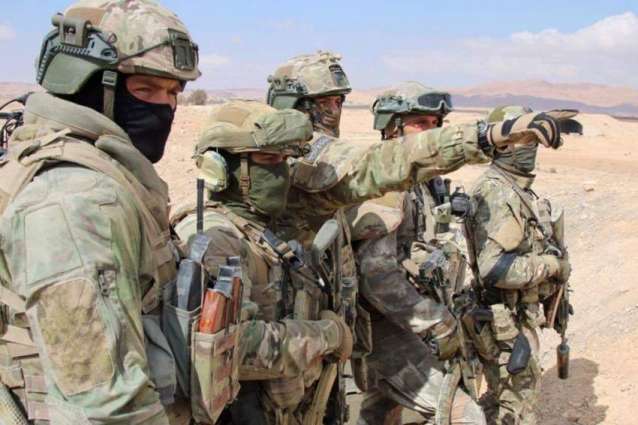Russian servicemen at the Tartus military base in Syria have been carrying out routine training to repel sea and aerial attacks of a simulated enemy and also practicing detaining subversive groups that try to infiltrate the Russian military base, a Sputnik correspondent reported from the scene
TARTUS (Syria) (Pakistan Point news / Sputnik - 25th March, 2019) Russian servicemen at the Tartus military base in Syria have been carrying out routine training to repel sea and aerial attacks of a simulated enemy and also practicing detaining subversive groups that try to infiltrate the Russian military base, a Sputnik correspondent reported from the scene.A group of simulated underwater saboteurs, which is detected during the exercises, is targeted with depth charges from the Unarmeec Kryma patrol boat. The ammunition usually goes off at a depth of several feet.
The Raptor high-speed patrol boat, a so-called marine predator, heads over to intercept an enemy ship that has dropped off divers. The main advantages of the patrol boat are its 1,000-horsepower engines and ability to reach a speed of 48 knots while handling an up to 6.6-feet wave. This makes this patrol boat the marines' most powerful weapon and indispensable equipment when it comes to defending coastal water areas.
Underwater swimmers from an anti-sabotage group are the underwater special forces, the elite of the Russian armed forces. They search warships moored at the Russian base several times a day. Swimmers, each of whom is equipped with a knife and an underwater firearm, patrol the area around the clock. There is no way the saboteurs can enter the base from underwater, so they "try" to find some way on the surface, where the perimeter is guarded by the Russian military police and soldiers of the Syrian government forces.
A military police officer opens the trunk of a car that is entering the base's secured area through a checkpoint.
"Remove the mat," he demands, after which a hidden assault rifle is revealed under the mat.
Well-rehearsed actions to detain and neutralize the driver take place after that.
This is just training, however. In reality, an enemy will have much more sophisticated strategies while attempting to enter the base, and a large-scale attack on the base will be repelled with armored vehicles.
The air defense units provide back-up for both the military base and its vessels. Even a small drone can be seen on the radar screen, it will be detected en route, dozens of miles away. The destruction of enemy aircraft is entrusted to Pantsir air defense missile systems, which had proven successful in repelling terrorists' drone attacks at the Hmeimim air base in Syria.
Tartus has always been important for Russia, especially during the Soviet era. In accordance with a 1971 agreement, a repair ship with 50-60 people aboard was deployed near the base and, if necessary, went out to the Mediterranean Sea to provide maintenance and other support to warships. Now, Russia has a 49-year lease for the base as part of an agreement with the Syrian government that was signed in 2017.
Since the Russian military is to stay in Tartus for a long period of time, the command is trying to provide military personnel with comfortable combat duty conditions, such as decent living conditions, good food, a sports facility with new training equipment, and internet access to communicate with relatives.
A wooden chapel occupies a special place at the base. The wood was brought here from a distant Ural village to build a temple in honor of the canonized Admiral Ushakov.
"We are trying to make every soldier feel at home," military priest John said.
He then started to ring the bells, inviting servicemen to a church service.




